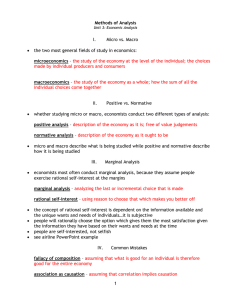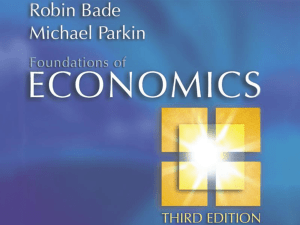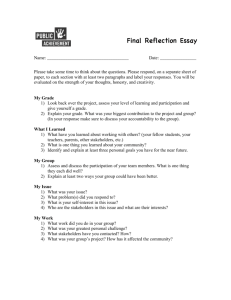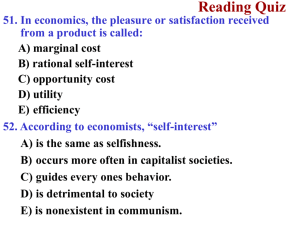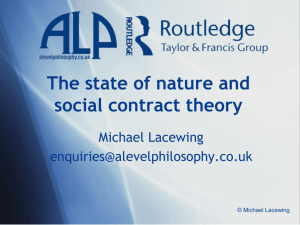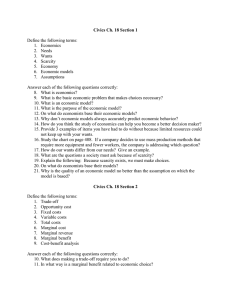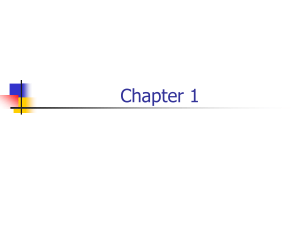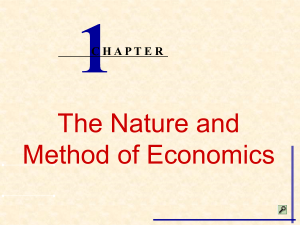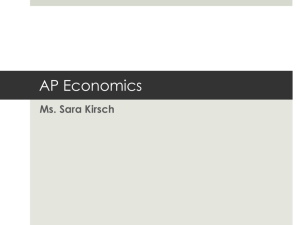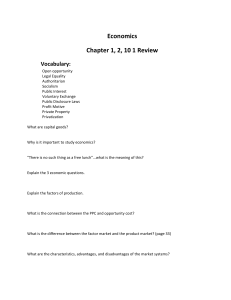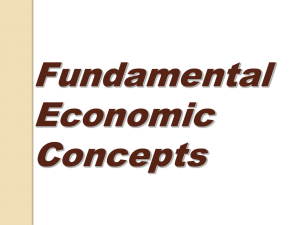1.2 the economic way of thinking
advertisement
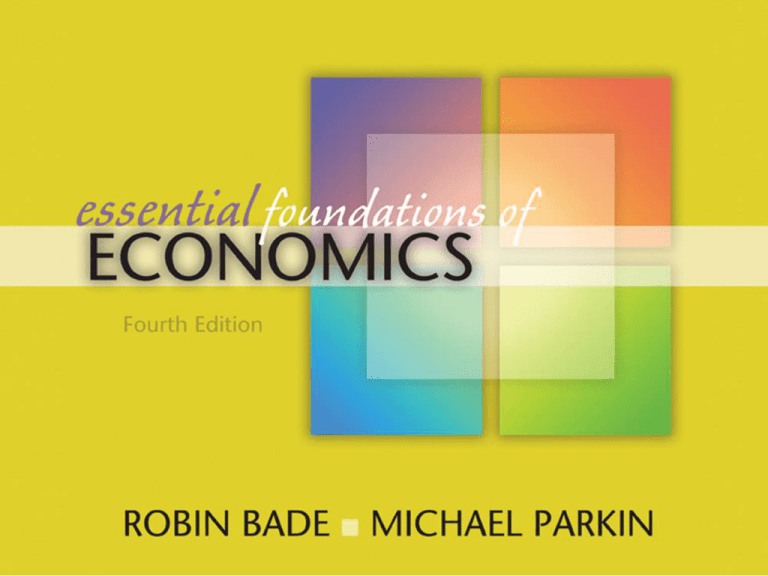
Getting Started CHAPTER 1 CHAPTER CHECKLIST When you have completed your study of this chapter, you will be able to 1 Define economics and explain the questions that economists try to answer. 2 Explain the core ideas that define the economic way of thinking. 1.1 DEFINITION AND QUESTIONS All economic questions and problems arise because human wants exceed the resources available to satisfy them. Scarcity The condition that arises because the available resources are insufficient to satisfy wants. Faced with scarcity, we must make choices—we must choose among the available alternatives. The choices we make depend on the incentives we face. 1.1 DEFINITION AND QUESTIONS Economics Defined Economics is the social science that studies the choices that individuals, businesses, governments, and entire societies make as they cope with scarcity and the incentives that influence and reconcile our choices, Two big economic questions: • How choices determine what, how, and for whom goods and services get produced? • When do choices made in self-interest also promote social interest? 1.1 DEFINITION AND QUESTIONS What, How, and For Whom? Goods and services are the objects (goods) and actions (services) that people value and produce to satisfy human wants. What goods and services get produced and in what quantities? How are goods and services produced? For Whom are the various goods and services produced? 1.1 DEFINITION AND QUESTIONS When Is the Pursuit of Self-Interest in the Social Interest? The choices that are best for the individual who makes them are choices made in the pursuit of self-interest. The choices that are best for society as a whole are choices made in the social interest. 1.1 DEFINITION AND QUESTIONS Can choices made in self-interest also serve the social interest? Let’s illustrate with eight topics: 1 Globalization and International Outsourcing Globalization and international outsourcing are in the interest of owners of multinational firms that profit, but is it in the social interest? 1.1 DEFINITION AND QUESTIONS 2 The New Economy Makers of computer chip and programs developed products in their self-interest but did they develop their products in the social interest? 3 Disappearing Rainforests When we buy products made with ingredients from rainforests are we damaging the social interest? 1.1 DEFINITION AND QUESTIONS 4 Water Shortages Are the global water resources managed in the self-interest or in the social interest? 5 Global Warming The choices we make concerning how to produce and use energy are made in our selfinterest but do they serve the social interest? 1.1 DEFINITION AND QUESTIONS 6 Natural Disasters The events following Katrina illustrate the tension between self-interest and social interest. Without government enforced laws, self-interest can be carried too far and damage the social interest. Price hikes serve the self-interest of producers and hurt the self-interest of consumers. Do they serve the social interest? 1.1 DEFINITION AND QUESTIONS 7 Unemployment Firms hire workers in their self-interest and people accept jobs in their self-interest but is the number of jobs available in the social interest? 1.1 DEFINITION AND QUESTIONS 8 Social Security Time Bomb As baby boomers reach retirement age, social security payments will increase faster than the taxes used to pay them and the United States will have to borrow from foreigners. Someone will have to pay off these debts. Each voter’s choice about who will pay is made in the self-interest but is it in the social interest? 1.2 THE ECONOMIC WAY OF THINKING Core Economic Ideas: • • • • • Rational choice Cost Benefit Margin Incentives 1.2 THE ECONOMIC WAY OF THINKING Rational Choice A rational choice is a choice that uses the available resources to best achieve the objective of the person making the choice. We make rational choices by comparing costs and benefits. 1.2 THE ECONOMIC WAY OF THINKING Cost: What You Must Give Up Opportunity cost is the best thing that you must give up to get something—the highest-valued alternative forgone. Sunk cost is a previously incurred and irreversible cost. A sunk cost is not part of the opportunity cost of a current choice. 1.2 THE ECONOMIC WAY OF THINKING Benefit: Gain Measured by What You Are Willing to Give Up Benefit is the gain or pleasure that something brings. On the Margin A choice made on the margin is a choice made by comparing all the relevant alternatives systematically and incrementally. 1.2 THE ECONOMIC WAY OF THINKING Marginal Cost Marginal cost is the cost of a one-unit increase in an activity. Marginal Benefit Marginal benefit is the what you gain when you get one more unit of something. 1.2 THE ECONOMIC WAY OF THINKING Making a Rational Choice When we take those actions for which marginal benefit exceeds or equals marginal cost. Responding to Incentives An incentive is a reward or a penalty—a “carrot” or a “stick”—that encourages or discourages an action. 1.2 THE ECONOMIC WAY OF THINKING Micro and Macro Views of the World Microeconomics: The study of the choices that individuals and businesses make and the way these choices interact and are influenced by governments. Macroeconomics: The study of the aggregate (or total) effects on the national economy and the global economy of the choices that individuals, businesses, and governments make. 1.2 THE ECONOMIC WAY OF THINKING Economics as a Social Science Economists distinguish between • Positive statements: What is • Normative statements: What ought to be The task of economic science: To test positive statements about how the economic world works and to weed out those that are wrong. 1.2 THE ECONOMIC WAY OF THINKING Unscrambling Cause and Effect The central idea that economists use to unscramble cause and effect is ceteris paribus. Ceteris paribus means “other things being equal.” By changing one factor at a time and holding other relevant factors constant, we are able to investigate the effects of the factor. 1.2 THE ECONOMIC WAY OF THINKING In the real world, we observe the outcomes of simultaneous operation of many factors. To sort of the effects of each factor, economists use • Natural experiments • Statistical investigations • Economic experiments Natural experiments: A situation that arises in the ordinary course of economic life in which the one factor of interest is different and other things are equal. 1.2 THE ECONOMIC WAY OF THINKING A statistical investigation looks for a correlation. Correlation is the tendency for the values of two variables to move in a predictable and related way. An economic experiment puts people in a decisionmaking situation and varies the influence of one factor at a time to discover how they respond. 1.2 THE ECONOMIC WAY OF THINKING Economics as Policy Tool Economics provides a way of approaching problems in all aspects of our lives: personal, business, and government.
